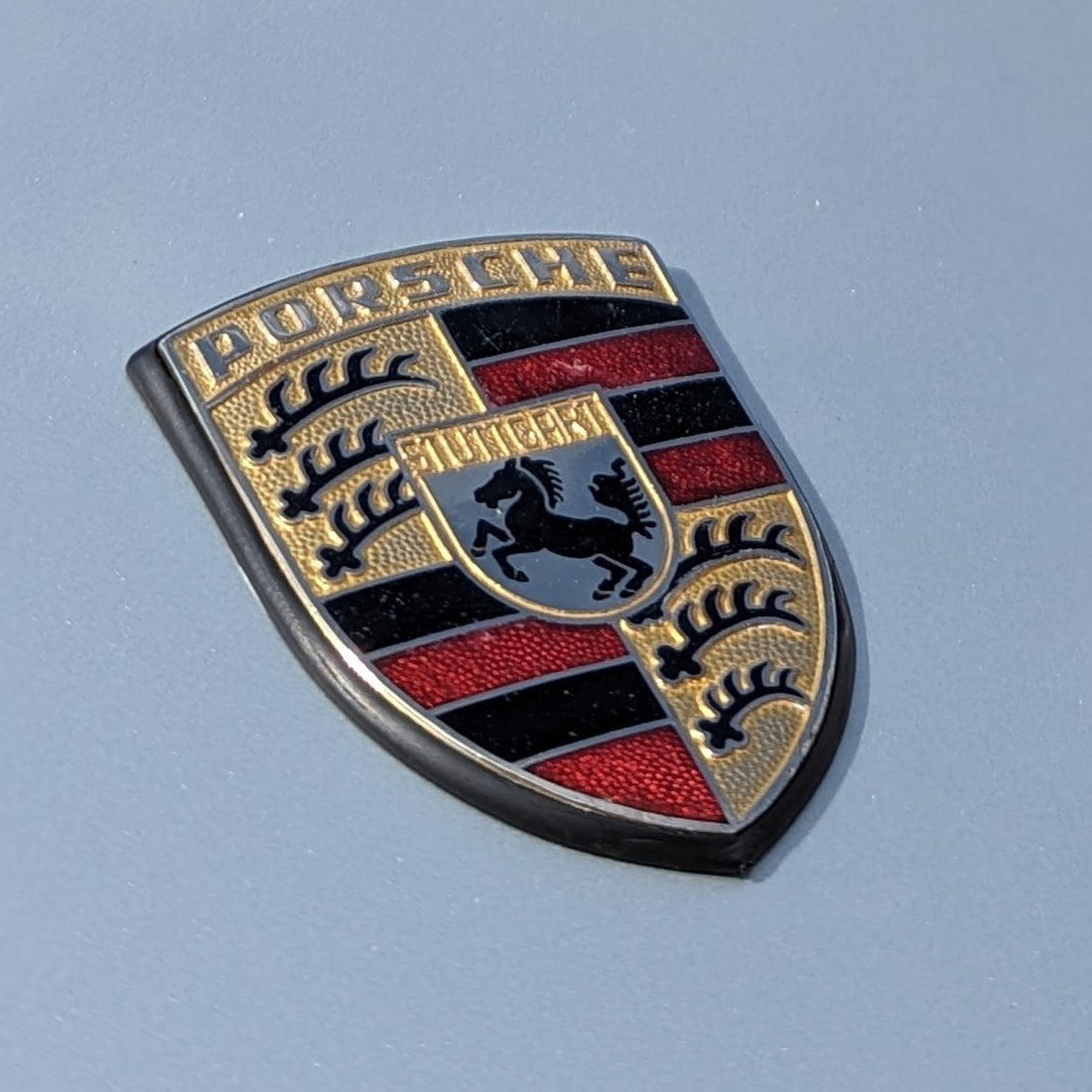
Electric Porsche 911 vs. Pikes Peak

Chris Lennon is a name that resonates with excitement and innovation in the world of motorsports, particularly at the legendary Pikes Peak International Hill Climb (PPIHC). A seasoned racer with a unique journey from internal combustion engines to electric vehicles, Lennon has not only competed at the highest levels but has also chronicled the race's rich history in his book "The Peak of Racing." In this exclusive interview, we delve into Lennon's experiences, insights, and future aspirations as he prepares for the 2025 PPIHC with his cutting-edge electric Porsche 911 RSR.
Can you walk us through your journey in the Pikes Peak International Hill Climb? How did you first get involved, and what keeps you coming back year after year?
In late 2011, a fellow racer approached me and said that with the success I’d had over the years in road racing, I should consider entering the PPIHC since the road had just completed being paved. I had never considered it before that, because it was unpaved and I’m no rally driver!
I pitched it to my wife as a one and done bucket list thing. I knew after my first practice run that I wanted to do this as many times as I could, though.
What really keeps me coming back are a few things:
- The chance to drive unlimited speeds on a mountain road
- The chance to compete against factory teams and pro drivers
- The amazing people involved (fellow racers, officials, volunteers, and fans)
You've achieved significant success in both ICE and EV racing at PPIHC. How does the experience differ between the two, and what motivated the switch to electric?
This race, like many, tends to become an arms race from one year to another. Competition becomes tougher, and you need to perform better and better each year. We had gone from a 3 liter to 3.6, then to a 3.8 over the years to just remain competitive. When I was approached with the opportunity to go EV, it was a no brainer in terms of the power increase and overall performance improvement. Plus, it seemed like a really cool thing to be the first ever person to try such a conversion of a winning PPIHC car.Your Porsche 911 RSR has a fascinating history. Can you tell us about its evolution from an ICE champion to an EV contender?
When we decided to make the switch, it became clear that it would involve pretty much everything about the car changing. It wasn’t just a matter of dropping some batteries, controllers and motors into it. We re-thought the entire car. With a clean sheet of paper, I said what I’d really like is something that handles like a Porsche GT-4, which has perfect 50/50 weight balance and handles like a slot car. We designed it with this in mind, and actually achieved this.
When I say everything about the car changed, it’s not really an exaggeration. The entire roll cage, and tube frame structure of the car changed. We even changed things you might not expect, like the pedal cluster, steering wheel, seat, etc. on the interior of the car. So, although on the outside, the fiberglass body appears the same, it became an entirely new car under the skin.
As the author of "The Peak of Racing," what insights can you share about the unique challenges and allure of the Pikes Peak race?
It was a real honor to get the chance to write that book. First off, for someone who thought they knew the road already, writing a book that covers all 156 turns really tested my knowledge of the entire mountain. Second, uncovering all of the great stories from so many legends that have raced on the mountain was a thrill. Getting to spend time with folks like Bobby and Al Unser, Mario Andretti, Rick Mears, Art Vatanen, Romain Dumas, and others was thrilling for a racer like me who’s also a big race fan.
In terms of the racing itself, a track that’s actually a public road, with 156 turns rather than the more typical 10-20 found on a road course definitely changes things. There are so many other factors unique to this race that add to its “charm”, from wildlife, weather, varying grip levels, lack of any runoff in case of mistakes, to just how brutal it is on car and driver.
Looking ahead to the 2025 race, what are your primary goals, both in terms of performance and technological advancement? Do you see any other teams as direct competitors?
PPIHC is always a race against yourself. Everyone always likes to say “the mountain always wins” or “the mountain decides” and that’s quite true. In 2025, we are literally racing against our past performance on the mountain. The best time that the car could do in its ICE configuration was 10:50, so we’d like to beat that in the EV configuration. That’s really the primary goal – to demonstrate that the car is superior as an EV.
In terms of technological advancement, we have gone from six to eight motors, and have a host of other improvements on our wish list. What we end up doing will depend on time and money, but at a minimum, it’s going to be a very different car than the one we ran in 2019 as a six-motor EV.

How do you see the role of electric vehicles evolving in the PPIHC, and what impact do you think this will have on the race's future?
The PPIHC has a long and rich history of EVs, going back decades, believe it or not. I do think that this race is better suited to EVs than any other, due to the altitude, demands on the powertrain, and relatively short race distance (just over 12.4 miles).
We have seen some incredible EVs compete in recent years, from last year’s winning Ford Lightning to the all-time record holder, the Volkswagen ID-R, and many, many more. It’s really fun to see the innovation being pushed by this race in the area of electric vehicles. I expect we’re only going to see more and more cool EVs compete in the race as time goes on.
Can you describe the ideal sponsor partnership for your team? What unique opportunities can you offer to potential sponsors?
The ideal sponsor is one for whom our story resonates of taking a previous class-winning PPIHC car and converting it to EV, demonstrating all of the advantages of electric propulsion over internal combustion.
In addition, the car is a perennial fan and media favorite, garnering huge attention both in person and on the internet every year. It’s unbelievable to us the amount of adoration and attention it gets. Any sponsor gets really great exposure with this car, and its unique story, so really any organization wanting to get their name in front of a really attractive worldwide demographic that this race draws would get great benefit from sponsoring our effort.
For major sponsors, we can also offer experiences on the mountain if they’d like to see what is involved in testing and practice days. I also am an award-winning public speaker, and would be happy to offer my services in this area to them for their employees, partners, etc.
What specific technical improvements or innovations are you planning for the 2025 race to break your previous record time of 10:50?
Biggest is the upgrade from six to eight motors. We have also made several real breakthroughs in terms of extracting the maximum power and reliability out of the powertrain as a whole. We are exploring other upgrades, but at this time, it’s really powertrain focused.For those unfamiliar with PPIHC, can you explain why this race is considered one of the most challenging and prestigious in motorsports?
It’s consistently ranked as one of the top races in the world. I think part of that is its rich history (only the Indy 500 is older in the US), and the really impressive list of champions. Most of the best drivers from any generation over the past century have competed here.
Then there’s the fact that there is no other race in the world anything like it. Most other hill climbs are very short and not nearly as technical or high altitude as the PPIHC. The mental and physical demands on the driver and team means that the human element is truly unique. Then, the abuse that the cars that compete here is unlike anywhere else, due to the lower air density, rough racing surface, and the sheer brutality of ascending a 14,000 foot mountain at speed.
This all gives it a mystique unmatched in motorsports.
How do you balance the need for speed with the safety considerations of racing on Pikes Peak?
It’s interesting that while the PPIHC has no limits on power in any of its classes, its safety regulations are more stringent than perhaps any other race, with good reason. When I first brought the car to run in 2012, it had inspection stickers on it from a wide array of race sanctioning bodies, but I was told straight off that the roll cage would not pass tech. We actually cut the roof off the car and re-did the entire cage. In “normal” circuit racing, they want to be sure that the cage remains intact after a roll. On Pikes Peak, in all likelihood, you won’t have a single roll…and the cage must withstand repeated stress from up to a dozen consecutive rollovers in some cases.
While we do everything we can to make the car as light as possible, the one place we don’t even consider weight is with safety items. The car must first be safe, then fast. Knowing that I’m in an extremely safe car also gives me the confidence to push the envelope right to the edge in racing it up the mountain.
Can you share a memorable moment or challenge from your PPIHC career that exemplifies the spirit of this unique race?
There are so many. One of my favorites was in my second year, 2013. I’m a big IndyCar fan, and in the tech inspection line on the Monday of race week, we were queued up behind Simon Pagenaud (Indy 500 and IndyCar Championship winner). We talked and he really liked the car, and was super friendly. As luck had it, we ended up practicing together all week. It blew me away how friendly and down to earth he was. He and I would talk after runs about different turns and how we approached them. I guess being treated as a peer by legends of the sport was something that took me by surprise, and it’s so cool.How has your approach to the race changed over the years, particularly with the transition to EV technology?
I think my approach has always been to take each race as seriously as possible, and my team is the same. It’s a professional operation all the way. We spend at least a year preparing for each race. The team is burning the midnight oil many nights, we have team meetings weekly, and are laser focused on not leaving anything to chance. To me, the race is won or lost in the months leading up to it. Preparation is key.
With the transition to an electric powertrain, this has only gotten more important. The hours spent by the team on the car is unreal. The engineers have literally been working on the car for the past five years to get it to where it is now. The dedication of everyone involved is stunning, but to me, this is the only way to do it. I’ve been lucky enough to have podiumed almost every time I’ve competed in this race, and that’s all down to the hard work by the team for the full year leading up to each race.
What message would you like to convey to potential sponsors about the value and excitement of partnering with your team for the 2025 PPIHC?
This is such a high-profile global event that every sponsor enjoys great exposure whenever they’re on our car. As I said earlier, it’s such a unique and beautiful car, with a great story, that it is a magnet for fans and the media.
I also think that just being a part of such a legendary event is a thrill for everyone involved. I don’t think they can get this bang for their buck from any other form of advertising…and it’s really cool for everyone in the organization to be invested in something so exciting and high-profile.
Sponsorship
Chris Lennon's journey at the Pikes Peak International Hill Climb is a testament to the evolving nature of motorsports and the relentless pursuit of excellence. From his initial "one and done" approach to becoming a perennial contender and innovator, Lennon embodies the spirit of PPIHC – a blend of tradition, technology, and sheer human determination.
As he looks towards the 2025 race with his electrified Porsche 911 RSR, Lennon stands at the forefront of a new era in hill climb racing. His transition from ICE to EV not only showcases the potential of electric vehicles in motorsports but also highlights the continuous innovation that keeps PPIHC at the cutting edge of racing technology.
Lennon's insights into the unique challenges of Pikes Peak, his respect for the mountain and fellow competitors, and his dedication to safety and preparation offer a comprehensive view of what it takes to compete in one of the world's most demanding races. As electric vehicles continue to make their mark on this historic event, Chris Lennon and his team are poised to push the boundaries of what's possible, carrying forward the legacy of "The Race to the Clouds" into an electrifying future.
If you are interested in sponsoring Chris and his team for the 2025 race, please reach at chris@windingroadadventures.com. Chris is also looking for individuals to join join the team as a technical volunteer to review data and make suggestions.




